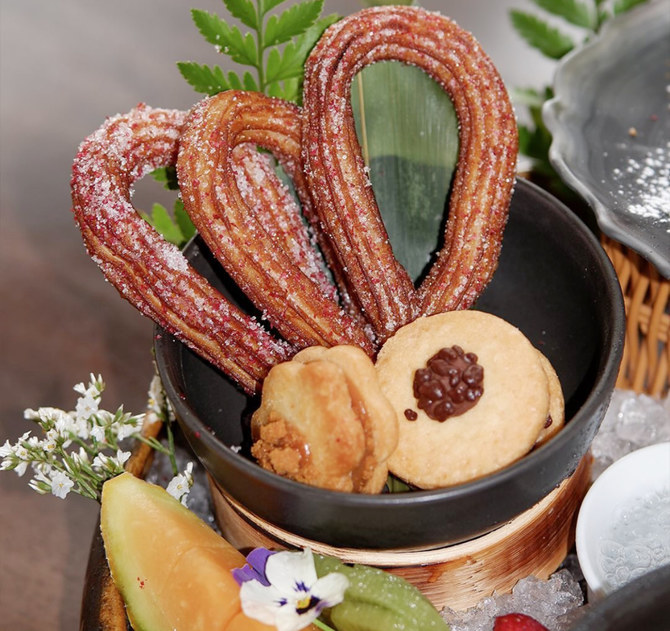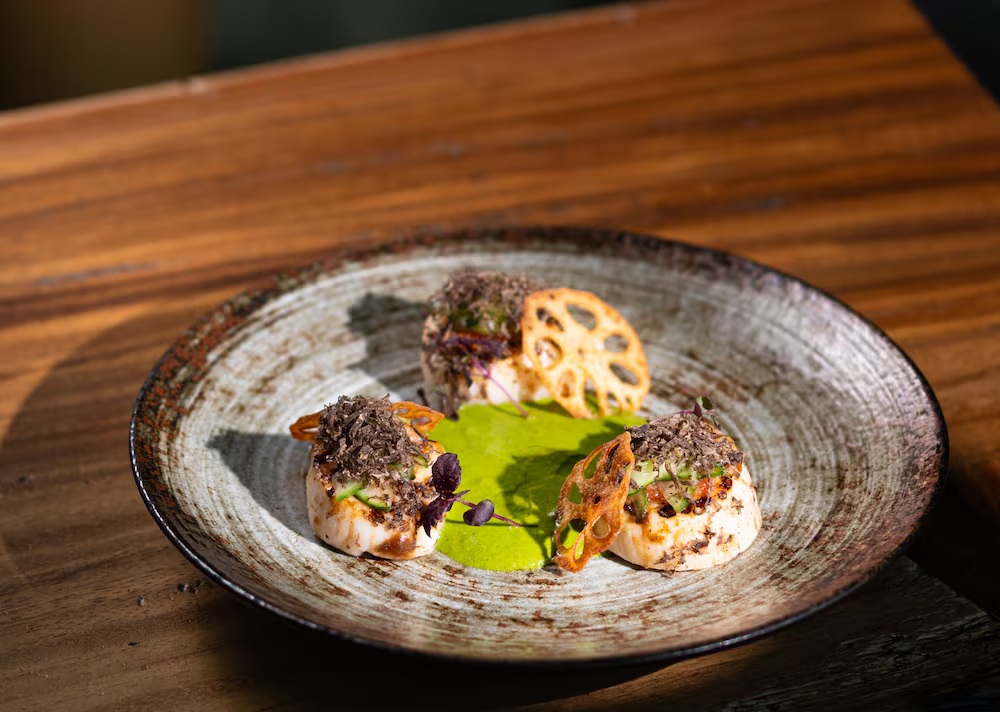In the environs of Boston, the restaurant Sarma sports a fixed menu blending Turkish tradition with a distinctively refreshing American taste for diverse and proud mixtures inspired by kitchens across the Eastern Mediterranean
On the verdant Turkish coasts of the Black Sea, corn flour is sometimes mixed with ground anchovies. It is an example of a New World crop’s far-flung integration by way of a culinary invention that has since become associated with Old World tradition. To kick off its popular vegetarian tasting list, the Somerville foodie haunt Sarma begins with cornbread suffused with honey, covered with sesame seeds and filled with liberal doses of melted feta.
If that were not enough to remind anyone nostalgic for the apiculture of Istanbul’s northern shores, and other nourishing secrets of the forests that border Bulgaria on Turkey’s western frontier and Georgia to the east, Sarma also added slices of jalapeño to its salty, sweet and spicy Black Sea cornbread, rounding out its peculiarly American palette where common Turkish and Mexican ingredients commingle ingeniously.
And the adaptability of corn in its various forms only continues from there out of the imagination of the creative chefs behind Sarma’s widely praised, if slightly steep, menu for friends and families to share, toasting to health and wealth inside the roomy establishment and under strings of lights in view of one of Greater Boston’s trendier, younger neighborhoods. Shaped into a square, the delectable dish of corn fritters is as combinatory as it is refined.
Although plural, the corn fritters come out as a single cube, topped with luscious pomegranate seeds over a nest of cilantro, an herb embraced roundly by Mexico’s cooks since its export from the Mediterranean, where it goes by the English name coriander. In contrast with textures of sprinkled, crushed walnut and the grainy seeds of juicy pomegranate, the fritter is only delicately fried, for a gentle crisp, and perfectly soft, moist, under the surface.
A textural complement to these corn-led starters is a shallow bowl of sugar snaps peas, seemingly picked with a meticulous eye for their signature crunch. But the innovative minds behind the scenes at Sarma have further accentuated that irresistibly delectable effect by mixing in purposefully undercooked red quinoa. And again, the protein-rich Peruvian grain accompanies Middle Eastern elements with relish, spattered with pistachio-laced tahini.
After the heat
As dishes emerged from Sarma’s kitchen to the spacious, airy patio – a converted parking lot, though charming amid the hipster milieu – personable servers came out to present a slew of words as exotic as the look and taste of the food. Their descriptions and sounds would be foreign to most unilingual Anglophones in America, although, by the nature of their enigmatic vibrancy, desirable and appetizing.
In Greek, “keftedes” simply means “meatball,” but to Americans unfamiliar with the Balkan Peninsula whose capital surrounds Attica, it is an elegant word to the ear. And the imported recipes of Greece are, at times, almost as newsworthy as a fiscal crisis in the European Union, especially when prepared by a kitchen with a sophisticated grasp of its interrelations with neighboring countries across the Aegean, Ionian and Mediterranean Seas.
Sarma cooks its pithily sized zucchini keftedes much in the style of two varieties on Turkish dishes, namely “mücver” (pronounced mooj-ver), generally noted as a savory pancake made of sliced zucchini, and a kind of “köfte” (which means meatball in Turkish, and is enunciated closely to that of “kefte”) of cooked lentil, formed into ribbed ovals when the cook presses their fingers onto its malleable shape.
But like a jazz musician absorbed in a dizzying quantity of notes, Sarma never does just one thing for each of its dishes. The degree of fusion practiced by its kitchen staff is nearly overwhelming, imaginably the result of a mad search for tastes beyond that prescribed by the world’s culinary traditions and agricultural yields. The presentation as zucchini keftedes again betrays its pluralization, as it only consists of one piece of consolidated vegetarian meatball.
Yet, the Turkish “mücver” of a Greek “kefte,” as it might be understood, is crowned with a piquant tomato pesto, a dollop of plain yogurt, and rests on a foundation of caponata, which is essentially a Sicilian eggplant chutney, similar to the French vegetable stew that goes by the name of ratatouille. As flavorful and sustaining, the caponata is every bit as worth the dish as the green gourd of its title.
To feast and live
There is more than one tasteful indication of culinary compatibility between France and the Levant, as the countries exchanged foods, and likely dined en route since time immemorial within the Turkish pale. An appealing recipe that they shared is a type of garlic sauce, which to the French would be recognizable as Provencal aioli and in Lebanon is termed “toum,” basically a creamed garlic with olive oil and lemon juice.
“Toum” heightens an otherwise simple stir of leafy greens with a subtle though potent touch of tang. The effect of eating Sarma’s dish, Garlicky Greens, is that of a resurgence of appetite in the middle of a menu that might otherwise overwhelm, if not in sheer mass, then in the range of spices, harmonious contrasts and unprecedented fusions of esculent earthliness that seem to have been made to transcend the tongue’s known capacity for sensation.
Another intriguing reference to Mexican cuisine occurs toward the end of the menu, and counterintuitive to its temporal placement, is a variation on an appetizer that would normally serve as the beginning to an evening out at a restaurant on America’s streets. It is not obvious what makes Sarma’s “Egyptian Lentil Nachos” Egyptian other than the Near Eastern origins of lentils, a legume that Turkey produces as a top competitor in the global food market.
In fact, according to archaeobotanical excavators, the oldest remains of lentils are found not in the region of the Fertile Crescent, which encompasses southeastern Turkey and the northern Nile river floodplains of Egypt, but in Greece, where in the Peloponnesian cave of Frankhthi, there are lentil remains going back 11,000 years. At Sarma, the cooks must be researchers as their lentil nachos are smothered in the yogurt-heavy tzatziki sauce.
Sarma, which means wrap or surrounding in Turkish, is a fine metaphor for regionality. And from the peppery Spanish eggplant “romesco” that complements their exquisite dish “Rainbow Carrots” to the Italian favorite of gnocchi, only stamped Grecian with feta, this bistro in Somerville, a stone’s throw from the Atlantic Ocean, is leading the way toward an experience of Mediterranean culture that embraces uniqueness as an outcome of plurality.
And finally, no Latin, Arabic, Turkish or Greek table is complete without sweets, a finish that Sarma consummates boldly, especially during summer, with their strawberry frozen yogurt, the fullness of its dairy blend foregrounded and accompanied by sticky coconut milk jam, chocolate baklava bark brittle and spoonfuls of jellied rhubarb. When coupled with a locally manufactured beverage, such sustenance tastes like humanity’s love for the planet, and perhaps evidence that the feeling is mutual.








